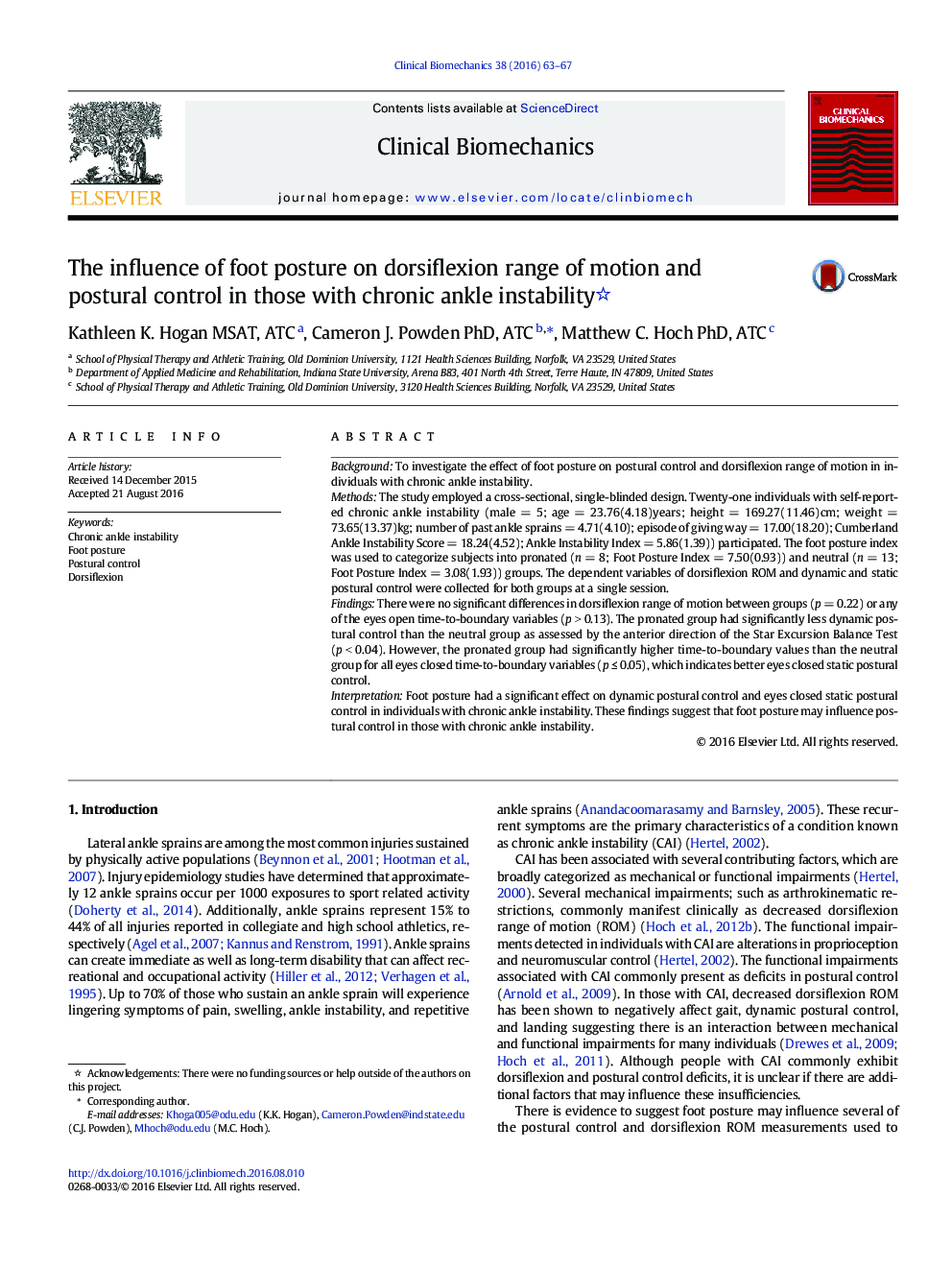| کد مقاله | کد نشریه | سال انتشار | مقاله انگلیسی | نسخه تمام متن |
|---|---|---|---|---|
| 4050058 | 1603740 | 2016 | 5 صفحه PDF | دانلود رایگان |
• Foot posture influences the assessment of chronic ankle instability deficits.
• Foot posture may have a clinically important effect on dorsiflexion range of motion.
• Those with pronated feet had better static balance during eyes closed conditions.
• Those with neutral feet had better dynamic postural control.
BackgroundTo investigate the effect of foot posture on postural control and dorsiflexion range of motion in individuals with chronic ankle instability.MethodsThe study employed a cross-sectional, single-blinded design. Twenty-one individuals with self-reported chronic ankle instability (male = 5; age = 23.76(4.18)years; height = 169.27(11.46)cm; weight = 73.65(13.37)kg; number of past ankle sprains = 4.71(4.10); episode of giving way = 17.00(18.20); Cumberland Ankle Instability Score = 18.24(4.52); Ankle Instability Index = 5.86(1.39)) participated. The foot posture index was used to categorize subjects into pronated (n = 8; Foot Posture Index = 7.50(0.93)) and neutral (n = 13; Foot Posture Index = 3.08(1.93)) groups. The dependent variables of dorsiflexion ROM and dynamic and static postural control were collected for both groups at a single session.FindingsThere were no significant differences in dorsiflexion range of motion between groups (p = 0.22) or any of the eyes open time-to-boundary variables (p > 0.13). The pronated group had significantly less dynamic postural control than the neutral group as assessed by the anterior direction of the Star Excursion Balance Test (p < 0.04). However, the pronated group had significantly higher time-to-boundary values than the neutral group for all eyes closed time-to-boundary variables (p ≤ 0.05), which indicates better eyes closed static postural control.InterpretationFoot posture had a significant effect on dynamic postural control and eyes closed static postural control in individuals with chronic ankle instability. These findings suggest that foot posture may influence postural control in those with chronic ankle instability.
Journal: Clinical Biomechanics - Volume 38, October 2016, Pages 63–67
